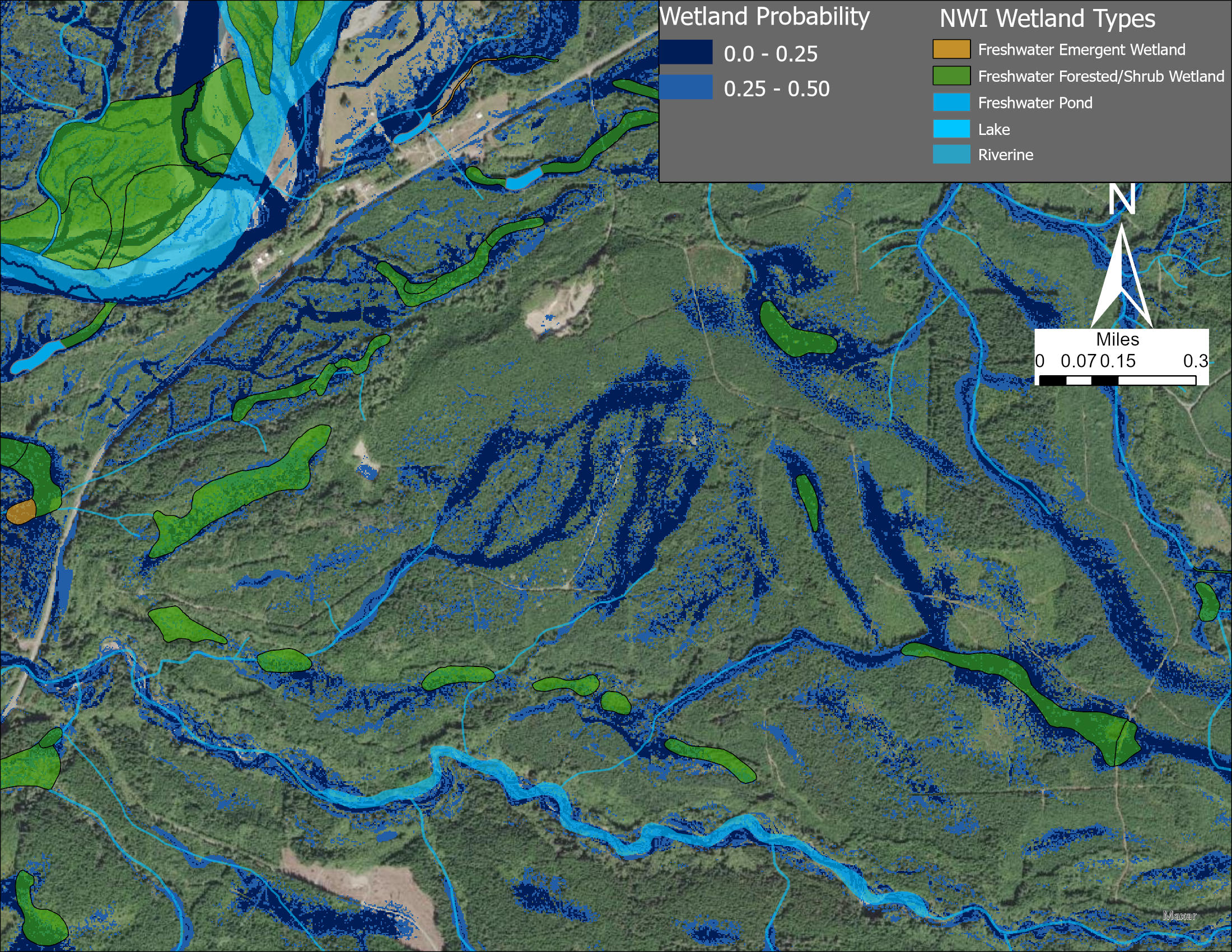Portfolio
Forested Wetland Identification
Forested wetlands are diverse habitats that are often difficult to map due to being hidden from aerial photography and satellite imagery by their overstory. This is especially true in the Pacific Northwest where tall and dense conifers cover the landscape year-round. To identify forested wetlands, I collaborated on developing the Wetland Intrinsic Potential tool (WIP tool) which leverages terrain metrics and machine learning to identify probability patterns of wetlands across a landscape. This work was led by Dr. Meghan Halabisky and has been published in Hydrology and Earth System Science

Teal Carbon & Cryptic Carbon
Teal Carbon : Carbon stored in terrestrial inland wetlands
Cryptic Carbon : The hidden soil carbon in unmapped wetlands
Teal carbon differentiates inland wetlands as a significant carbon storing landscape from blue carbon in aquatic/marine environments and green carbon in forests.
In Washington State and the Pacific Northwest of the U.S. perennial forest cover can hide inland wetlands from conventional wetland mapping with aerial photography and spectral remote sensing approaches to mapping wetlands. These wetlands can be soil carbon hot spots due to their saturated soils which accumulate organic matter.
I am part of the Teal Carbon research team at the University of Washington which is collaborating with stakeholders to enhance remote sensing approaches to mapping forested wetlands in order to improve the estimates of soil carbon stocks. We are addressing a potential missing pool of soil carbon that may be vulnerable to future climate conditions and land use change and recently published our first results in Nature Communications
Geospatial controls on soil carbon stocks in the Pacific Northwest
Soils store large amounts of organic carbon with some of the largest stocks in wetlands We need accurate models and maps of soil organic carbon (SOC) stocks that identify controls and drivers (Yu et al., 2021). However, it is challenging to build models that include wetlands SOC stocks and identify significant drivers and controls, especially with a diversity of modeling approaches that include machine learning.
We have captured the soil moisture gradient using the Wetland Intrinsic Potential (WIP) tool, a topographically-driven mapping algorithm that produces a continous probability metric between uplands and wetlands (Halabisky et al., 2023). We have shown its potential to better model SOC spatial distribution across diverse and heterogenous landscapes (Stewart et al., in revision), but it is uncertain if SOC driven by the WIP gradient acoss different regions and scales.
Soil Carbon in Southeast Alaska and the North Pacific Temperate Coastal Rainforest
In collaboration with the U.S. Forest Service Pacific Northwest Research Station, we expanded the mapping of wetland-to-upland SOC stocks in the Heen Latinee Experimental Forest (HLEF) within the North Pacific Coastal Temperate Rainforest (NPCTR). The NPCTR is one of the most carbon dense ecosystems on the planet with cool temperatures and high precipitation (Bidlack et al., 2021). Leveraging the WIP wetland probability metric (Halabisky et al., 2022) as a wetland-to-upland continuum and the SOC samples along it, we can potentially identify how MAOM and POM vary with this gradient.

